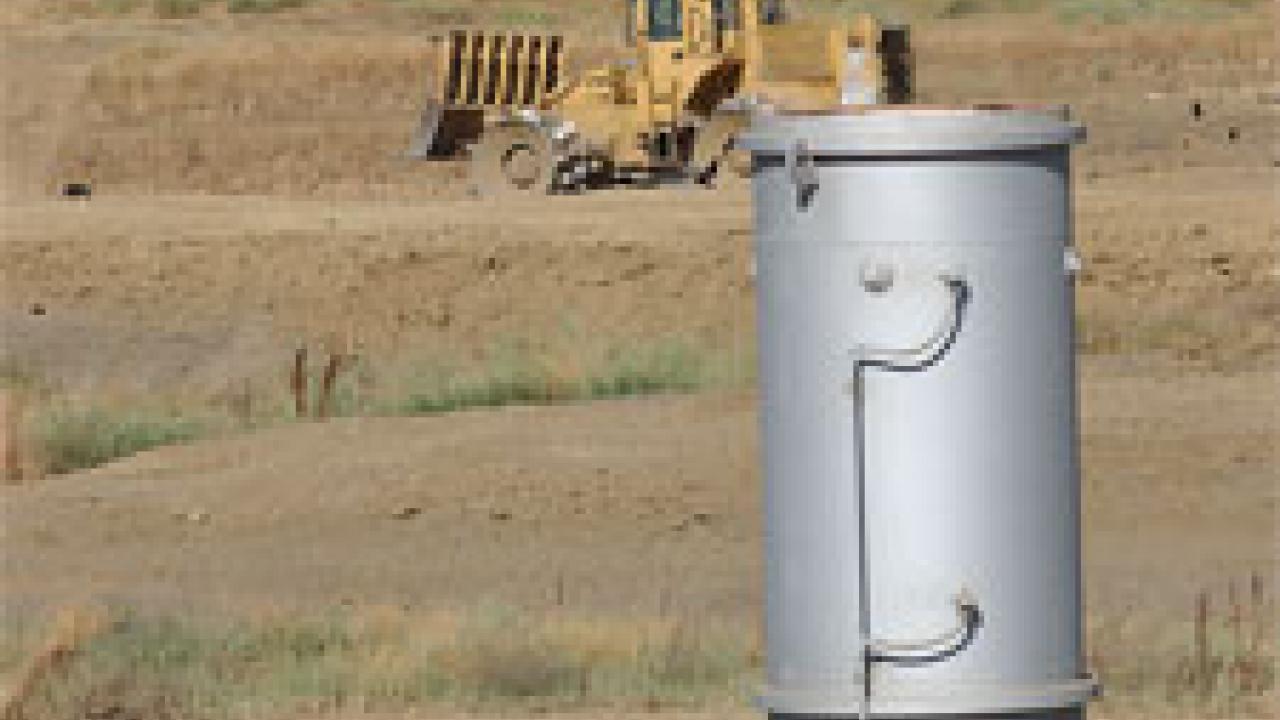Landfills don't typically earn high marks for aesthetics. They smell, and do not add much to the scenery. The UC Davis landfill smells, too, and the trash is not a pretty sight. But what the dumping ground lacks in surface beauty it makes up for by being environmental friendly and by saving the campus tens of thousands of dollars per year, say campus officials.
Methane gas produced naturally at the landfill — located on the western edge of the campus, along County Road 98 — is used as an energy source to power a nearby boiler at the California Regional Primate Center, just up the road from the landfill.
Methane is produced by decomposing organic waste, such as food or grass clippings. It is also a major component of natural gas, so the primate center boiler is able to use methane instead of typical natural gas from PG&E to satisfy some of its energy needs. The university saves an estimated $50,000 to $80,000 each year on its energy bill thanks to the landfill, said Utilities Department Associate Director Chris Cioni.
The landfill gas burns in a boiler specially designed to accommodate pure methane. The energy heats the primate center during the winter and cools water through a refrigeration process during the summer. Cioni said that methane could also be converted to electricity if the facility received a higher quantity, "but for now we'll just stick to heating and cooling."
If not collected, methane released from landfills escapes into the atmosphere, where the gas can remain for as long as 15 years, trapping heat and creating a greenhouse effect.
Engineers created a collection system in 1995 to harness the gas released by a 23-acre closed section of the landfill. A series of 34 extraction wells gather the methane into a gas collection area. It is then forced through a mile-long pipe to the primate center boiler .
"The methane is not a waste; it's actually a commodity," said solid waste manager Jason Magness. "Especially with the high cost of gas these days."
Magness said plans are underway to collect methane produced by the 4-acre section of the landfill that is still in use. The new landfill gas system should be operable by the end of the summer.
Although the university benefits economically from the clever use of methane, Magness says the landfill gas system was not initially a financial decision.
"The LFG system was installed to address regulatory and environmental issues," he said. But shortly after the system's installation, "the solid waste manager at the time, Joe Stagner, figured the methane could be used as a cost savings," Magness said. "The cost of the pipeline construction and boiler burner retrofit was recouped in less than two years by the savings in the university's PG&E bill."
Dateline readers can check out a UC Davis NewsWatch segment airing on television this month about the landfill methane gas systgem at www.news.ucdavis.edu/multimedia/.
Media Resources
Amy Agronis, Dateline, (530) 752-1932, abagronis@ucdavis.edu
